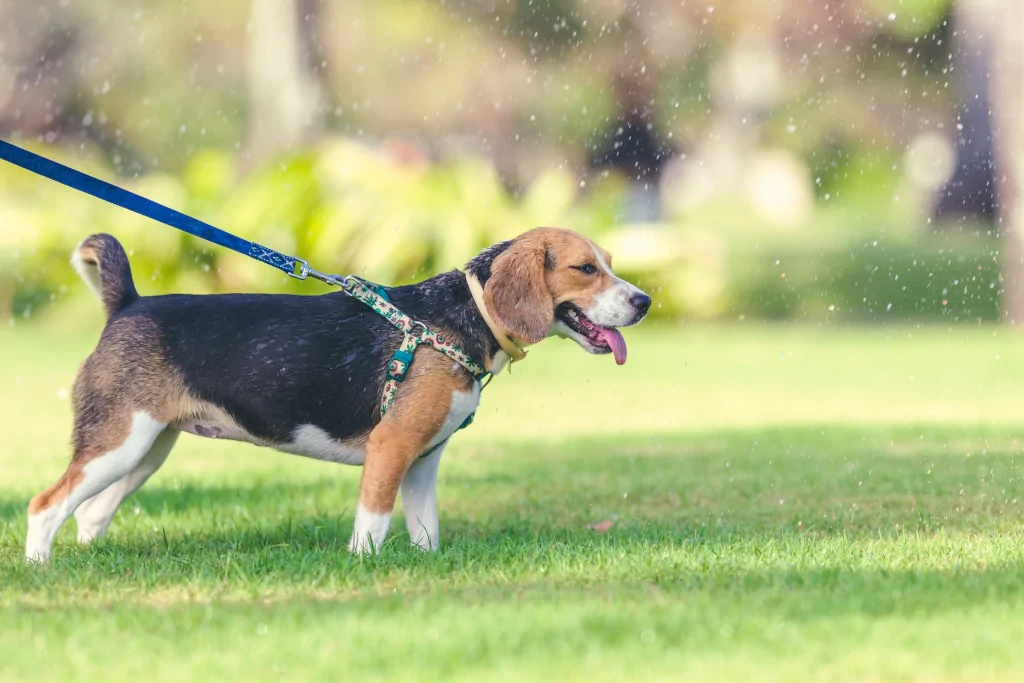Disclosure: We may earn a commission from helpful, relevant links in our content. No cost to you. See our privacy policy.
Walking a dog is often necessary. Walking a dog that’s stronger than you can be challenging and even intimidating. Struggling to maintain control while avoiding injury is a real concern for many dog owners.
The key to walking a strong dog is combining proper training techniques, using the right gear, and establishing yourself as the leader during walks.
By mastering these skills, you’ll be able to enjoy stress-free strolls with your powerful pup. Ready to transform your dog walking experience? Let’s dive in!

How to Handle a Dog That Is Stronger Than You?
Handling a strong dog starts with understanding their behavior and energy levels.
Focus on building trust and communication with your canine companion. Begin by practicing simple commands, such as “sit,” “stay,” and “heel,” which will help reinforce your role as the leader.
Remember, patience is crucial, and it’s essential to use positive reinforcement to reward good behavior. As you progress, you’ll gain confidence and create a solid foundation for tackling more advanced techniques in the upcoming sections.
Training a Strong Dog Not to Pull on the Leash
Mastering the art of walking a strong dog that tends to pull on the leash can seem like an uphill battle. But fear not, we’re here to arm you with practical techniques that can help you transform your daily walks into an enjoyable experience for both you and your four-legged friend.
Introducing the “Stop and Go” Technique
One effective method to teach a strong dog not to pull on the leash is the “Stop and Go” technique. Whenever your dog starts to pull, stop walking immediately. Wait for your dog to loosen the tension on the leash before resuming the walk.
This helps your dog understand that pulling on the leash will not get them where they want to go.
Rewarding Loose Leash Walking
Positive reinforcement is essential in training your dog to walk without pulling. When your dog walks with a loose leash, praise them and offer treats.
To learn loose leash walking, follow our simple step-by-step guide on loose leash walking. You need to start with the right equipment, begin indoors, use treats and praise, and apply a few more tips for success.
By rewarding their good behavior, you’ll encourage them to maintain a relaxed pace during walks.
Changing Directions Unexpectedly
Another helpful strategy is to change directions suddenly when your dog starts pulling. This keeps your dog focused on you and encourages them to pay attention to your movements.
Over time, your dog will learn that following your lead is the key to a successful walk.
Using Training Tools
Consider using training tools such as no-pull harnesses or head collars, which can help you maintain better control during walks.
These tools discourage pulling by redirecting your dog’s focus and providing gentle pressure when they try to pull.
Consistency is Key
Training a strong dog not to pull on the leash requires consistency and dedication. One time, I was walking a friend’s spirited Labrador Retriever, Ziggy, when we encountered a group of squirrels scurrying about.
Ziggy, being the playful and curious pup that he was, started to pull with all his might to chase them. I quickly applied the “Stop and Go” technique, and although it took a few tries and a burst of treats, Ziggy eventually calmed down and began to walk nicely on the leash.
This experience taught me the value of patience and persistence when training a strong dog.
By diligently integrating these techniques into your walking routine and maintaining a consistent approach, you’ll pave the way to a more peaceful and rewarding walking experience with your strong dog – and put an end to those frustrating tug-of-war sessions.

Select the Right Leash and Collar for Your Powerful Pup
Selecting the appropriate leash and collar for your strong dog can make a significant difference in your walking experience. Start by considering the size and strength of your dog when choosing the right equipment. Visit our guide on leash selection.
Flat Collars and Standard Leashes
For well-behaved dogs, a flat collar and a standard leash made of nylon or leather can be sufficient. These are widely available and suitable for most dogs, but they might not be enough for dogs that tend to pull. (check out the best standard dog leashes on Amazon)
No-Pull Harnesses
If your dog is prone to pulling, consider using a no-pull harness. These harnesses have a front attachment point that discourages pulling by redirecting your dog’s focus when they try to pull ahead. (best no-pull harnesses on Amazon)
I once walked a friend’s strong Boxer who was used to pulling on walks. When we tried a no-pull harness, it was a game-changer, making our walks more enjoyable and less stressful.
Head Collars
Head collars can be a good option for dogs that are particularly strong or difficult to control. These collars provide gentle pressure on the dog’s muzzle and neck, redirecting their attention back to you when they try to pull. (here are the best ones on Amazon)
Just remember to introduce the head collar gradually and positively to ensure your dog is comfortable wearing it. Check our guide on dog training collars to learn more about the potential collar options.

Establishing Yourself as the Leader During Walks
To create a positive walking experience, it’s crucial to establish yourself as the leader when walking your strong dog. Here are some tips to help you assert your leadership during walks:
- Set the Pace. Make sure you’re the one setting the pace of the walk. If your dog starts to walk ahead or pull, gently correct their behavior by changing direction, stopping, or using a training technique like the “Stop and Go” method.
- Be Confident. Dogs can sense when you’re nervous or unsure, so maintain a confident and calm demeanor during walks.
- Use Clear, Consistent Commands. Teach your dog basic commands such as “heel,” “sit,” and “stay.” Use these commands consistently during walks to reinforce your leadership and keep your dog focused on you.
- Reward Good Behavior. Praise and reward your dog for walking calmly and maintaining a loose leash. This positive reinforcement will help your dog understand what is expected of them during walks and strengthen your bond as the leader.
Walking your dog provides them with mental stimulation, but it should also be a positive experience for you as a dog owner, as well.
Suggested read: Training aids for leash pulling
By combining the right equipment with effective training techniques and establishing yourself as the leader, you can create a more enjoyable and manageable walking experience for both you and your strong dog.
When to Seek Professional Help for Dog Walking Issues?
While perseverance and dedication can go a long way in training your strong dog, there are times when seeking professional help is the best course of action.
When I was struggling with a particularly challenging dog, I remember the relief I felt when I finally decided to seek the help of a professional dog trainer. The trainer was able to pinpoint the issues and provide specific solutions that made a world of difference in our walks.
You may consider seeking professional help if:
- Your dog shows aggression towards other dogs or people during walks.
- You’ve tried various techniques, but your dog’s pulling persists or worsens.
- You feel overwhelmed or physically unable to manage your dog on walks.
A professional dog trainer or behaviorist can assess your dog’s specific needs, identify the root cause of their behavior, and provide tailored guidance to improve your walking experience.
Check out this cool video from Kikopup on how to leash-train your strong-pulling dog:
FAQs
How can I build trust with my strong dog during walks?
To build trust with your strong dog during walks, maintain a calm and confident demeanor, use consistent commands, and reward good behavior with praise and treats.
What are the best walking techniques for controlling a strong dog?
The best walking techniques for controlling a strong dog include setting the pace, using the “Stop and Go” method, and teaching basic commands such as “heel,” “sit,” and “stay.”
Can I use a harness for a strong dog that pulls?
Yes, using a no-pull harness with a front attachment point is an effective option for a strong dog that pulls, as it redirects their focus when they attempt to pull ahead.
Are there any exercises to help my dog become calmer during walks?
To help your dog become calmer during walks, practice mental and physical exercises before the walk, such as obedience training, puzzle toys, or a short play session to burn off excess energy.
Alex, a passionate animal lover, has experience in training and understanding animal behavior. As a proud pet parent to two dogs and three cats, he founded AnimalReport.net to share insights from animal experts and expand his knowledge of the animal kingdom.




